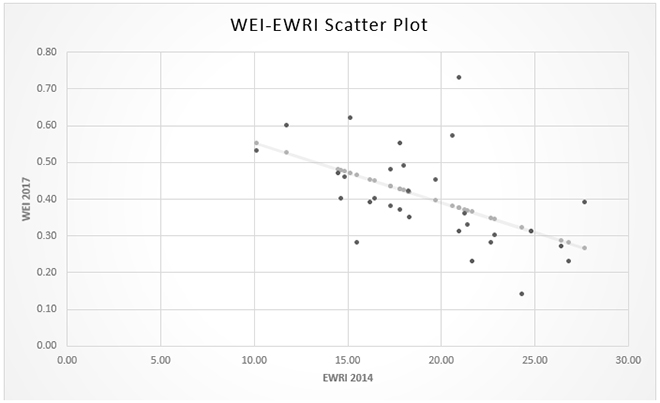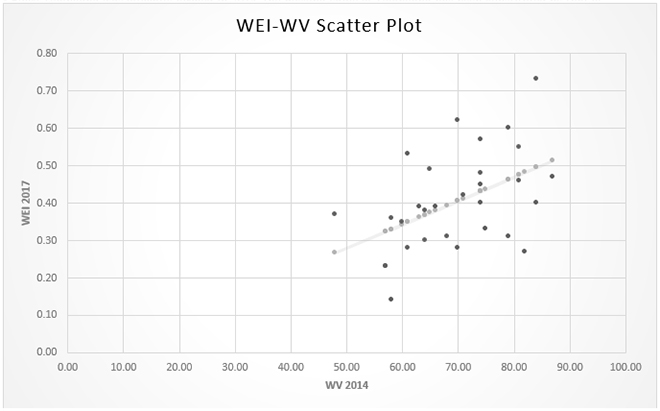
In the realm of Indian politics, the pursuit of gender equity and empowerment has been a long-standing goal. A critical measure to achieve this goal has been the passing of the historic Constitution (128th Amendment) Bill, which aims to allocate 33 percent of seats in the Lok Sabha and state assemblies to women, on 20th September 2023. Remarkably, this Women's Reservation Bill is the first piece of legislation to receive unanimous support from both Houses in the new Parliament building of India.
One of the key challenges in achieving gender equity through legislative representation lies in India's deep-rooted cultural norms and patriarchal history.
The original Women's Reservation Bill of 2008 marked a significant step towards increasing women's participation in decision-making bodies, proposing a one-third reservation for women in national and state legislatures, specifically the Lok Sabha and Vidhan Sabhas. Despite the initial enthusiasm and support from leaders like Atal Bihari Vajpayee, the bill faced obstacles and ultimately lapsed with the dissolution of the 15th Lok Sabha. One of the key challenges in achieving gender equity through legislative representation lies in India's deep-rooted cultural norms and patriarchal history.
A statistical analysis of the Indian states
While these reservations have garnered attention and support, their impact on women's empowerment at the grassroots level remains a subject of scrutiny. To understand the dynamics at play, data from 2013-14 is examined in an Economic and Political Weekly paper in May 2023, including the percentage of women in the Lok Sabha, state assemblies, and panchayats across 30 Indian states and regions. An Elected Women Representation Index (EWRI) is calculated based on the average representation of women in these bodies, which serves as a measure of each state's commitment to women's representation in decision-making roles.
Table 1: Elected Women Representative and Women Voter Turnout
| States |
Percentage of Women MPs in Lok Sabha 2014 |
Percentage of Women in State Assemblies 2014 |
Percentage of Women Representatives in Panchayats 2013[1] |
Elected Women Representation Index (EWRI) 2014 |
Percentage Turnout of Women Voters for General Election (WV) 2014[2] |
| Andhra Pradesh |
8.00 |
8.00 |
33.50 |
16.50 |
74.00 |
| Arunachal Pradesh |
0.00 |
3.00 |
41.60 |
14.87 |
81.00 |
| Assam |
14.00 |
12.00 |
36.90 |
20.97 |
79.00 |
| Bihar |
8.00 |
15.00 |
50.00 |
24.33 |
58.00 |
| Chhattisgarh |
9.00 |
11.00 |
54.50 |
24.83 |
68.00 |
| Delhi |
14.00 |
4.00 |
34.00 |
17.33 |
64.00 |
| Goa |
0.00 |
3.00 |
32.30 |
11.77 |
79.00 |
| Gujarat |
15.00 |
7.00 |
33.00 |
18.33 |
60.00 |
| Haryana |
0.00 |
10.00 |
36.50 |
15.50 |
70.00 |
| Himachal Pradesh |
0.00 |
4.00 |
50.10 |
18.03 |
65.00 |
| Jammu & Kashmir |
17.00 |
3.00 |
33.56 |
17.85 |
48.00 |
| Jharkhand |
0.00 |
10.00 |
58.60 |
22.87 |
64.00 |
| Karnataka |
4.00 |
1.00 |
43.60 |
16.20 |
66.00 |
| Kerala |
5.00 |
5.00 |
51.90 |
20.63 |
74.00 |
| Madhya Pradesh |
17.00 |
13.00 |
50.50 |
26.83 |
57.00 |
| Maharashtra |
10.00 |
4.00 |
49.90 |
21.30 |
58.00 |
| Manipur |
0.00 |
5.00 |
48.50 |
17.83 |
81.00 |
| Meghalaya |
0.00 |
7.00 |
38.50 |
15.17 |
70.00 |
| Mizoram |
0.00 |
0.00 |
30.50 |
10.17 |
61.00 |
| Nagaland |
0.00 |
0.00 |
43.50 |
14.50 |
87.00 |
| Odisha |
10.00 |
5.00 |
49.31 |
21.44 |
75.00 |
| Punjab |
8.00 |
12.00 |
34.90 |
18.30 |
71.00 |
| Rajasthan |
4.00 |
14.00 |
50.00 |
22.67 |
61.00 |
| Sikkim |
0.00 |
13.00 |
49.95 |
20.98 |
84.00 |
| Tamil Nadu |
10.00 |
7.00 |
35.00 |
17.33 |
74.00 |
| Tripura |
0.00 |
8.00 |
36.00 |
14.67 |
84.00 |
| Telangana |
6.00 |
8.00 |
45.14 |
19.71 |
74.00 |
| Uttar Pradesh |
16.00 |
9.00 |
40.00 |
21.67 |
57.00 |
| Uttarakhand |
20.00 |
7.00 |
56.10 |
27.70 |
63.00 |
| West Bengal |
29.00 |
12.00 |
38.40 |
26.47 |
82.00 |
| Source |
Women and Men in India -2015 - Ministry of Statistics and Programme Implementation, Ch. 5, Table 5.5, Page 7; PRS Legislative Research Website - 16th Lok Sabha, 2014 for the missing values of Tripura, Sikkim, Mizoram, Meghalaya, Manipur & Arunachal Pradesh. |
Women and Men in India -2015 - Ministry of Statistics and Programme Implementation, Ch. 5, Table 5.8, Page 9. |
Women and Men in India -2015 - Ministry of Statistics and Programme Implementation, Ch. 5, Table 5.9, Page 10; Status of representation of women in PRIs - Ministry of Panchayati Raj – 2016 for the missing values of Jammu & Kashmir, Odisha, Sikkim and Telangana. |
Constructed by simple average of the previous three columns. |
Women and Men in India -2015 - Ministry of Statistics and Programme Implementation, Ch. 5, Table 5.4, Page 6; |
Source: Soumya Bhowmick, “Equality versus Empowerment: Women in Indian Legislature,” Economic and Political Weekly, May 13, 2023.
The Hindustan Times Women Empowerment Index (WEI) of 2017 provides valuable insights into the status of women in India. It evaluates states based on eight parameters related to women's participation in household decisions, employment, experiences of spousal violence, property ownership, access to financial services, and menstrual hygiene. This index allows for the comparison of women's representation in politics (EWRI) with their actual empowerment. The analysis reveals intriguing trends. States with high women's representation in legislative bodies often cluster around lower ranks in women's empowerment. Conversely, states with higher percentages of women voters tend to exhibit a positive correlation with women's empowerment.
Women voter percentages have a positive causality with WEI, indicating that greater women's participation in the electoral process correlates with higher empowerment levels.
Further analysis involves econometric exercises to determine the statistical significance of EWRI and women voter percentages in estimating WEI. The results show that EWRI has a negative contribution to WEI,[3] implying that higher legislative representation may not necessarily translate to increased women's empowerment. Conversely, women voter percentages have a positive causality with WEI,[4] indicating that greater women's participation in the electoral process correlates with higher empowerment levels.
Beyond legislative representation
Legislative quotas, while important, may not fully address the complexities of women's empowerment. The critical mass theory posits that a considerable number of women in legislatures can bring about a shift in attitudes and political processes. However, gender empowerment requires a more bottom-up approach, focusing on the lowest strata of the socioeconomic hierarchy. True empowerment necessitates a sociopolitical transformation at the grassroots level, characterised by women's access to education, equal opportunities, economic independence, and, most importantly, political independence.
The critical mass theory posits that a considerable number of women in legislatures can bring about a shift in attitudes and political processes.
In conclusion, it is important to underscore the need for a comprehensive and multifaceted approach to women's empowerment in India. While legislative representation is a critical aspect, it must be complemented by measures that empower women at the grassroots level. Achieving gender equity and true empowerment requires a deeper understanding of the complexities involved and a commitment to addressing them effectively.
(Note – For a more detailed analysis, please see the Special Article titled “Equality versus Empowerment: Women in Indian Legislature” published on May 13, 2023, by the same author, in Economic and Political Weekly, Volume 58, Issue No.19.)
Soumya Bhowmick is an Associate Fellow with the Centre for New Economic Diplomacy at Observer Research Foundation
Endnotes
[1] Due to non-existence of Panchayati Raj in Delhi, Mizoram, Meghalaya and Nagaland, their missing values are substituted by the simple average of Turnout of Women Voters for General Election 2014 in the report titled ‘Women and Men in India -2015’ by the Ministry of Statistics and Programme Implementation (Ch. 5, Table 5.4, Page 6) & Percentage of Women in State Assemblies 2014.
[2] Since Telangana was officially formed in 2014, the missing value of Telangana has been substituted by that of Andhra Pradesh.
[3] 
[4] 
The views expressed above belong to the author(s). ORF research and analyses now available on Telegram! Click here to access our curated content — blogs, longforms and interviews.






 PREV
PREV


